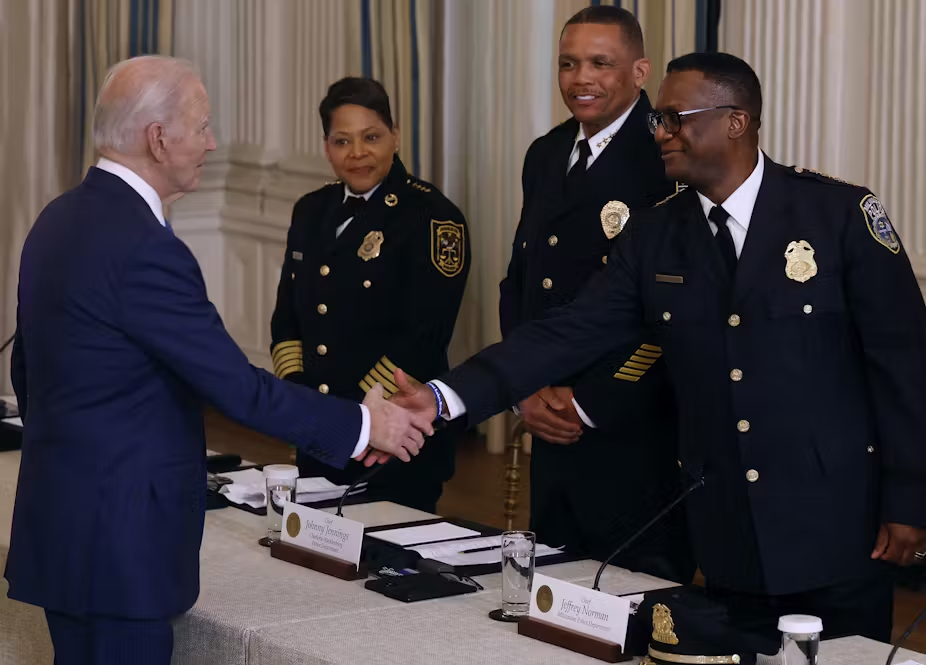In 2020, the U.S. experienced a surge in homicides, but by early 2024, the murder rates in most cities were beginning to normalize, returning to pre-pandemic levels. This drop was noted during a meeting of police chiefs at the White House in February 2024, where President Joe Biden praised the impact of investments made in law enforcement and community-based anti-violence initiatives. He mentioned that 2023 saw one of the lowest rates of violent crime in over 50 years.
However, amid discussions about declining crime rates, a crucial fact has often been overlooked: Black Americans are murdered at nearly eight times the rate of white Americans. This disparity is most severe among young Black men in inner cities, who are both the primary victims and perpetrators of gun violence and homicides.
It’s important to understand that this isn’t due to any inherent tendency toward violence among Black people; rather, it’s a reflection of the systemic barriers they face, such as poverty and limited access to quality education, good jobs, and affordable housing. These factors, research shows, contribute to neighborhood violence.
Compounding the issue is the high rate of illegal gun possession among young men in urban areas, driven by factors like distrust of the legal system and a perceived need for self-protection. More people carrying guns increases the likelihood of minor conflicts escalating into fatal encounters. Studies have established a link between increased gun carrying and a rise in gun-related deaths, underlining the risks associated with easy access to firearms.
Traditional “tough-on-crime” policies—like increasing police presence, enforcing minor offenses, and mass incarcerations—haven’t proven effective in addressing these underlying issues. These approaches fail to consider the deeper social challenges and the unwritten “street code” that governs behavior in many inner cities. This street code discourages cooperation with law enforcement and glorifies violence as a means of resolving disputes and gaining respect.
Generational poverty and limited opportunities often make crime a seemingly viable alternative for those in underserved communities. Studies suggest that when legitimate economic prospects are scarce, people may turn to illegal activities such as drug dealing and theft, which frequently involve violence to maintain control or settle disputes.
As scholars of criminal justice, one of whom is a former police officer, we believe that to reduce crime, there must be a focus on strategies that support at-risk individuals. Programs that offer mental health services and professional guidance, alongside a monthly stipend, have shown promise.
One such approach is the idea of providing cash allowances to young Black men at high risk of committing gun violence. Community-based initiatives like Advance Peace, a nonprofit that addresses gun violence, have demonstrated the potential of this strategy. Started in Richmond, California, in 2009, Advance Peace receives funding from city contracts, federal grants, and private donations. Participants in their programs can receive up to $1,000 a month for up to nine months, contingent on meeting goals that encourage them away from crime, like pursuing education or finding employment.
Advance Peace also provides mentorship, therapy, and even arranges for gang rivals to engage in dialogue, fostering understanding. In California cities like Richmond, Sacramento, and Stockton, where Advance Peace operates, gun-related violence decreased significantly from 2018 to 2021, with 5% to 52% fewer victims and 15% to 42% fewer shootings involving Black men under 35.
Despite this success, some critics argue against paying people to obey the law, suggesting that it undermines personal accountability. While these concerns are understandable, they miss the point. The aim isn’t to bribe potential offenders but to stabilize their lives and create pathways for growth. The cost of addressing these issues now is far less than the economic and emotional toll of gun violence, which amounts to over $500 billion annually in the U.S.
Ultimately, to break the cycle of violence, a comprehensive approach is needed. This means improving access to education, jobs, housing, and health care in inner cities. Initiatives that fail to address the underlying causes of violence are like treating the symptoms without addressing the root of the problem. By strategically investing in equal opportunities for upward mobility, society can create safer communities where young Black men don’t feel compelled to turn to guns for empowerment and protection.















































